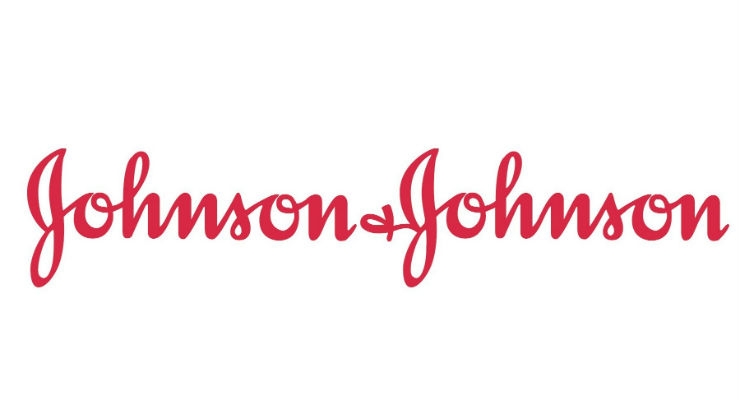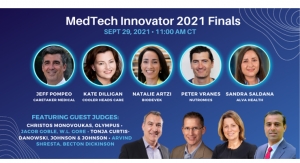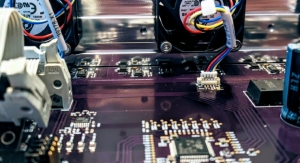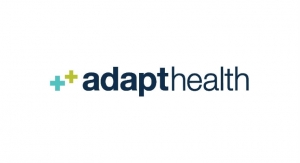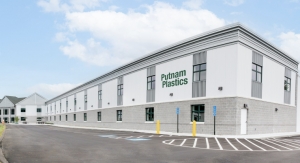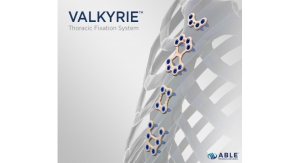07.19.16
$25.1 Billion ($70B total)
KEY EXECUTIVES:
Alex Gorsky, Chairman and CEO
Dominic J. Caruso, VP, Finance and Chief Financial Officer
Gary J. Pruden, Worldwide Chairman, Medical Devices
Sandra E. Peterson, Group Worldwide Chairman
Kathryn E. Wengel, VP, Johnson and Johnson Supply Chain
Michael H. Ullmann, Exec. VP, General Counsel
Ronald A. Kapusta, Corporate Controller, Chief Accounting Officer
NUMBER OF EMPLOYEES: 127,100
GLOBAL HEADQUARTERS: New Brunswick, N.J.
“Innovation is the specific instrument of entrepreneurship. The act that endows resources with a new capacity to create wealth.”
— Peter Drucker
Innovation is a woefully misunderstood concept. Ubiquitous, mysterious, and stubbornly elusive, that darling of business buzzwords has become synonymous with the loftiest of human ambitions: power, fame, and wealth. Like its counterpart, “leadership,” the word can stand firmly on its own but also pairs well with many adjectives; it signifies both everything and nothing, assuming various meanings depending on interpretation.
Yet, despite its popularity (Amazon lists more than 70,000 book titles on the subject), innovation is, at best, a vague, loosely-defined concept within most corporate circles. Its basic definition—systematically finding, encouraging, and implementing new ideas—has become buried beneath all the variations, nuances, tools, techniques, models, frameworks, and paradigms associated with the word.
Even in its most elemental form, though, innovation isn’t quite so simple. It’s certainly not as basal as the old adage alleges—necessity is not always the sole spawn of invention. “We can all agree that a problem can be a catalyst for a solution, and that many business innovations are born of business challenges,” author/speaker/business strategist/consultant/entrepreneur Larry Myler wrote in a June 2014 Forbes column. “But is it really that simple?”
Not really. Myler contends there are four distinct levels of innovation, the first being problem-solving. Deemed a “reactive” approach to innovation, this method can be both powerful and prolific as long as the problems and solutions are chosen and crafted carefully, Myler claims.
Preventing problems (Level No. 2) is an effective approach as well, though it can be difficult to find and rally the proper resources for executing change. Likewise, “continuous improvement” (Level No. 3) helps companies evolve with the market, but it can also endanger their past progress. “If it ain’t broke, break it is a fun maxim...” Myler writes in his column, “but...replacing a perfectly good business system, albeit for the greater good in the end, creates real problems in the near-term.”
Or, it can act as a springboard to the final level (four), where innovation is achieved through reinvention, or “creation of a new future.” This method, however, is one of the most challenging ways to innovate, as it requires companies abandon traditional ideation discovery processes in favor of unconventional practices. The Henry Ford Innovation Institute and companies like Google and Facebook, for instance, are banking their futures on impromptu workforce “collisions” designed to encourage random (but slightly orchestrated) encounters and idea-sharing among employees. Similarly, Yahoo banned telecommuting in 2013 to boost its grassroots thinktank prowess.
Such forward-thinking strategies, of course, are not foolproof, but without them companies risk possible extinction. “With today’s unprecedented pace of change, the pressure on companies to reinvent themselves is relentless,” Myler noted. “It is sobering to consider the number of companies...that have fallen into mediocrity or worse. Disruptive forces are constantly lurking in the shadows, ready to pounce on unwary, and therefore unprepared, successful companies. Staying relevant and competitive is no easy task.”
The job can be particularly difficult for large multinationals, which often fall victim to their own complacency, inflexibility, and tunnel vision. Johnson & Johnson currently is struggling with professional relevancy as it wrestles with a medtech market slowdown driven by cost-conscious hospitals and group purchasing organizations.
The $381 billion global market for medical devices is growing 3 to 4 percent annually, down from a double-digit rate in the early part of the millennium, according to various industry reports. JNJ’s medical device sales have slowed dramatically in the last few years, falling 7.3 percent and 3.3 percent respectively, in the final two quarters of 2015.
Despite the downturn, the 130-year-old company is confident it can remain a formidable force in the medical device sector by tackling innovation on several different levels.
With overall sales down 5.7 percent and its medical device revenue falling 8.7 percent in 2015, JNJ is taking a reactionary approach to innovation, integrating its Surgery and Orthopaedics businesses into a single Medical Devices Group under the leadership of Gary Pruden. The company is also cutting about 3,000 jobs within the Group over the next two years, or roughly 4 to 6 percent of the division’s global workforce in an effort to generate as much as $1 billion in annual savings by the end of 2018. JNJ executives claim the sum potentially could boost earnings growth.
“For 130 years, our company has been driving breakthrough innovation in healthcare—from revolutionizing wound care in the 1880s to developing cures, vaccines, and treatments for some of today’s most pressing diseases in the world,” CEO and Board Chairman Alex Gorsky wrote in his 2015 annual letter to shareholders. “We are acutely aware of the need to evaluate our business against the changing healthcare environment and to challenge ourselves based on the results we deliver. At Johnson & Johnson, we believe the most important contribution we can make to the dynamic challenges we are facing is innovation—innovation in products, services, solutions, and in everything we do.”
Some of those solutions have been crafted using Myler’s second-level approach to innovation (i.e., problem prevention). Over the last few years, the company has steadily been streamlining its Medical Device division, a former pecuniary powerhouse that once generated significant profits from its sales of stents, artificial joints, and surgical tools. But pricing pressure and strong competition from Medtronic plc, Abbott Laboratories, Boston Scientific Corp., and lesser-known firms have gradually eroded JNJ’s market share.
Consequently, the company has all but abandoned the stent business it had pioneered, and has been selling small, slower-growing units. Last March, for example, JNJ sold its Cordis business to Cardinal Health for $1.9 billion in cash, or about $1.59 billion (net of the value of tax benefits). The deal nearly matches the unit’s 1996 purchase price ($1.8 billion), enabling JNJ to break even on its original investment.
Headquartered in Fremont, Calif., Cordis garnered $780 million in 2014 sales. The division manufactures cardiology and endovascular products, including diagnostic and interventional devices such as catheters, balloons, stents, guidewires, and vascular closure equipment. Although its single largest market is the United States, Cordis collects about 70 percent of its total sales from outside America; the business has operations in more than 50 countries, including China, Japan, Germany, Italy, France, Brazil, and the United Kingdom.
“This initiative is part of our ongoing disciplined portfolio management approach to focus on our most promising opportunities to help patients and drive growth,” Gary Pruden, chairman of JNJ’s Global Surgery Group, said in a formal news release about the acquisition. “Cordis has made significant contributions to the field of cardiovascular care, and we believe the business has a promising future...”
The Cordis sale was the second major divestiture for JNJ in nine months. In June 2014, the company sold its Ortho-Clinical Diagnostics unit to private equity firm The Carlyle Group for $4.2 billion. Yet, even with those two transactions, the company still has 11 different medical device businesses, including BioSense Webster, the troubled orthopedic and neurological-focused DePuy Synthes, Janssen Diagnostics, and advanced surgical care units Ethicon and Ethicon Endo-Surgery.
“We have to put the patient in the center and reward innovations that drive better outcomes and long-term value,” Gorsky told investors at the start of JNJ’s 2015 annual report. “The promise of innovation in healthcare is great, but it comes with the need for forward-focused investment in R&D, a holistic approach to evolving global healthcare markets and bold future-facing strategies.”
Those strategies could potentially help JNJ reinvent itself, thereby helping the New Brunswick, N.J.-based company attain the fourth level of innovation. JNJ’s multi-faceted gameplan involves revamping its selling strategy, focusing on key markets (China, Japan, and the United States), and pursuing such high-growth areas as staplers and surgical robotics. The latter sector could be JNJ’s ticket to a “new future,” as the global market for surgical assistance devices is expected to more than double by 2019, ballooning from $62 million to $170 million, according to Business Insider.
The company is taking that leap of faith with Google, having created an independent surgical solutions firm called Verb Surgical Inc. to develop a robotic-assisted surgical platform that will help simplify medical procedures. The new venture is helmed by President and CEO Scott Huennekens, who led catheter-based imaging company Volcano Corporation through a 2006 IPO and then grew the company to about $400 million in annual sales before closing a $1.2 billion acquisition by Royal Philips.
JNJ’s collaboration with Google—announced last March—is designed to integrate the Internet giant’s expertise in computer science, advanced imaging, and sensors into O.R. tools. Real-time image analysis, according to executives, could help surgeons see better and software could highlight blood vessels, nerves, or the edges of tumors that are difficult to see with the naked eye. The two companies also hope to better organize the information surgeons need when they operate. Surgeons typically consult multiple separate screens in the operating room to check preoperative medical images like MRIs, results of previous surgeries and lab tests, or to better understand ways to navigate an unusual anatomical structure.
Software could place these images on the same screen that surgeons use to control robotic tools, reducing the need to look away at other screens during the procedures, Google bigwigs said. If the partnership bears fruit, it could pit JNJ against Intuitive Surgical Inc., a Silicon Valley maker of the da Vinci robot, which enables surgeons to remotely control instruments from a computer console. Intuitive is the dominant maker of surgical robots, though its sales slowed recently due to declines in use among gynecologic surgeons.
JNJ isn’t staking its future solely with Google, though. The company partnered last year with International Business Machines Corp. (IBM) to create virtual coaching services for patients; by combining IBM’s Watson cognitive computing and analytics platform with Apple’s user experience design, the coupling will attempt to predict patient outcomes, suggest treatment plans, and give patients targeted encouragement during the recovery process. Likewise, JNJ’s union with the AO Foundation is designed to deliver professional education and develop innovations to improve both patient outcomes and efficiency of care, a journey both entities jointly began in 1960.
The two organizations are collaborating on new innovation and will work to certify DePuy Synthes products by the AO Technical Commission for use in the foundation’s educational activities, in which more than 200,000 healthcare professionals are expected to participate during the next five years.
JNJ is also forging a new future through M&A. Its DePuy Synthes division, for example, added new capabilities to its lineup with the purchase of Salt Lake City, Utah-based Olive Medical Corporation in February 2015. Founded in 2009, Olive Medical manufactures high-definition visualization systems for minimally invasive surgery; its camera control unit and camera head capture full HD video, and illuminate consistent white light to the surgical site.
The deal gives DePuy Synthes Mitek Sports Medicine full use of Olive Medical’s imaging technology in its arthroscopy product line, presumably improving visualization in patients with shoulder, hip, knee, and small-joint maladies. It could also help JNJ simplify supplier networks for clinicians and medical service providers, company officials noted.
Biosense Webster Inc. strengthened JNJ’s position in the antistroke market with its November purchase of Coherex Medical Inc., maker of the CE-marked Coherex WaveCrest Left Atrial Appendage Occlusion System. Like Boston Scientific’s Watchman, the WaveCrest is designed to prevent stroke by plugging the heart’s left atrial appendage in patients with atrial fibrillation, making it a mechanical alternative to blood thinners such as warfarin.
Coherex has marketed WaveCrest as a product with the most anchoring points of any LAA occluder and a distal injection port to assess device stability during implantation. The Salt Lake City company has also claimed it is made of a substance that minimizes blood clot formation on the device surface.
European regulators approved WaveCrest in 2013 (it competes in that market with Boston Scientific’s second-generation Watchman FLX and St. Jude Medical Inc.’s Amplatzer Amulet) but the product is not available for investigational use in the United States. Coherex is planning to conduct clinical trials for Japanese and American approvals, but the device faces an uphill battle domestically due to reimbursement issues, new blood-thinning medications, and lingering questions about the safety of its implantation procedure.
Nevertheless, the Coherex deal is an astute attempt by Biosense Webster to supplement its interventional offerings with an implantable alternative. The company’s nMARQ Circular Catheter destroys tissue (radiofrequency ablation), while its Soundstar Catheter uses ultrasound technology to map cardiac anatomy.
Divide and Conquer?
Daniel O’Keefe is not a man who is easily discouraged.
Earlier this year—for the third time in roughly six months—the Artisan Partners managing director/portfolio manager proposed that JNJ split into three separate businesses (pharmaceutical, consumer, medical devices) to improve the company’s financial health. “I have engaged with the management of JNJ on two separate occasions over the past several months on matters that are of great concern to me and in my view should be of great concern to anyone interested in the company’s long-term value,” O’Keefe wrote in a Jan. 28 open letter to JNJ’s board. “There is no evidence that JNJ’s conglomerate structure creates value for shareholders. Two of the three businesses are among the worst-performing participants in their industry. In my view, separation of the three businesses would create immediate near and long-term value as greater focus and accountability is brought to bear.”
O’Keefe details his objections to JNJ’s existing structure in the letter, citing the company’s “extensive” M&A activity, product liability, and expenses as the main profit plunderers. He considers the 2012 Synthes acquisition “disastrous” and JNJ’s overall reinvestment practices “unacceptable.”
“I urge the board to...adopt new, publicly-disclosed financial targets for the faltering medical devices and consumer businesses,” wrote O’Keefe, whose firm has invested at least $445 million in JNJ. “Absent their return to industry-leading performance, the Board should commit to spin those businesses off to shareholders so that new, focused, and accountable management teams can lead them into the future.”
O’Keefe isn’t the first investment expert to suggest a JNJ split. Goldman Sachs analyst Jami Rubin has supported such a move since 2012, and CNBC stock market commentator Jim Cramer argued in favor of it last summer. So far, JNJ management has not publicly commented on the numerous calls for a split, though executives have acknowledged the poor performances of the Consumer and Medical Devices segments.
“Our Medical Devices business did not achieve its revenue ambitions for the year,” Gorsky said in the 2015 annual report. “As part of the restructuring we announced in January 2016, we are undertaking actions to further strengthen our go-to market model, accelerate the pace of innovation, prioritize key platforms and geographies, and streamline operations...We will continue to take the bold but appropriate steps to put our Medical Devices business in the best position to deliver more value for customers, our company, and for our shareholders.”
That might take some time, though. A 1.4 percent operational decline, 7.3 percent negative currency impact, and divestitures of the Ortho-Clinical Diagnostics and Cordis businesses contributed to a $2.38 billion decline in Medical Devices revenue in fiscal 2015 (year ended Dec. 31). U.S. sales slipped 1 percent to $12.1 billion, while international proceeds fell 14.8 percent to $13 billion due to a 1.7 percent operational decrease and a 13.1 percent negative currency impact.
The Medical Devices segment sustained losses in nearly every business unit, with Diagnostics (naturally) taking the largest plunge—91.1 percent—going from $962 million in 2014 to $86 million last year. Diabetes care came in a distant second, falling 10 percent to $1.92 billion; executives blamed the decrease on lower prices and volatile foreign currency rates, but both factors were partially neutralized by solid sales of Animas Vibe products. JNJ’s Vibe insulin pump is the first to pair with Dexcom’s G4 Platinum continuous glucose monitor, sampling interstitial fluid every five minutes and providing a trending chart of sugar levels. The waterproof Animas device displays readings obtained wirelessly from the G4 Platinum glucometer.
General surgery proceeds took the third-largest nosedive last year, plummeting 9.8 percent to $4.48 billion. Overall, JNJ’s Surgery unit sales shrunk 5.1 percent to $9.21 billion despite a 1.2 percent increase in advanced surgery revenue ($3.27 billion), market growth, better device saturation in certain geographical areas, and new product launches.
Among the various debuts last year was the Echelon Flex Powered Vascular Stapler, a device featuring a narrow anvil, an articulating shaft, and advanced placement tip designed for better visibility, navigation, and precise placement during thoracic and other procedures, including video-assisted thoracoscopic surgery for lung cancer. The product’s curved, blunt anvil is 26 percent more narrow and its shaft is 26 percent thinner than Covidien’s Endo GIA Curved Tip Reload system, offering the greatest angle of reach, according to JNJ executives. The stapler also provides 11 percent greater manual articulation in each direction, allowing more flexibility during final placement.
“Thoracic surgery is performed in restricted narrow spaces around delicate vascular anatomy,” noted Robert J. Cerfolio, M.D., F.A.C.S., FCCP professor, Division of Cardiothoracic Surgery and section chief of Thoracic Surgery at the University of Alabama at Birmingham. “This powered thin lower profile stapler is designed to improve access, visibility, and stability, and delivers a secure, hemostatic staple line. It is a significant advance that may help surgeons avoid potential complications and improve patient outcomes.”
The Cardiovascular division’s troubles stemmed primarily from the Cordis business divestiture. Sales sank 7.8 percent to $2 billion, though strong operational growth in the electrophysiology subsector—driven by solid gains in ThermoCool SmartTouch catheter revenue—helped slow the overall hemorrhaging. Approved by the U.S. Food and Drug Administration in early 2014, the ThermoCool catheter enables direct and real-time measurement of contact force during catheter ablation procedures for patients with drug-resistant paroxysmal atrial fibrillation, sustained monomorphic ischemic ventricular tachycardia, and Type I atrial flutter.
Lower prices and volatile foreign currency rates doomed Vision Care sales, which slid 7.5 percent to $2.6 billion. Similarly, Orthopaedics revenue fell victim to soft demand, pricing pressures, and inventory level reductions (mostly in China). Proceeds decreased 4.3 percent to $9.26 billion, though JNJ did generate strong sales of hips, the Attune Knee System, trauma TFNA nailing system, and Orthovisc/Monovisc sports medicine products.
The Attune’s rotating platform design increases the level of conformity to provide stability while delivering freedom of mobility, according to DePuy Synthes. Rotating platform knees aim to restore more natural movement to the joint by allowing the bearing to rotate in the same manner as an anatomical knee. Rotating knees also are designed to reduce stress and wear on the implant by 94 percent.
KEY EXECUTIVES:
Alex Gorsky, Chairman and CEO
Dominic J. Caruso, VP, Finance and Chief Financial Officer
Gary J. Pruden, Worldwide Chairman, Medical Devices
Sandra E. Peterson, Group Worldwide Chairman
Kathryn E. Wengel, VP, Johnson and Johnson Supply Chain
Michael H. Ullmann, Exec. VP, General Counsel
Ronald A. Kapusta, Corporate Controller, Chief Accounting Officer
NUMBER OF EMPLOYEES: 127,100
GLOBAL HEADQUARTERS: New Brunswick, N.J.
“Innovation is the specific instrument of entrepreneurship. The act that endows resources with a new capacity to create wealth.”
— Peter Drucker
Innovation is a woefully misunderstood concept. Ubiquitous, mysterious, and stubbornly elusive, that darling of business buzzwords has become synonymous with the loftiest of human ambitions: power, fame, and wealth. Like its counterpart, “leadership,” the word can stand firmly on its own but also pairs well with many adjectives; it signifies both everything and nothing, assuming various meanings depending on interpretation.
Yet, despite its popularity (Amazon lists more than 70,000 book titles on the subject), innovation is, at best, a vague, loosely-defined concept within most corporate circles. Its basic definition—systematically finding, encouraging, and implementing new ideas—has become buried beneath all the variations, nuances, tools, techniques, models, frameworks, and paradigms associated with the word.
Even in its most elemental form, though, innovation isn’t quite so simple. It’s certainly not as basal as the old adage alleges—necessity is not always the sole spawn of invention. “We can all agree that a problem can be a catalyst for a solution, and that many business innovations are born of business challenges,” author/speaker/business strategist/consultant/entrepreneur Larry Myler wrote in a June 2014 Forbes column. “But is it really that simple?”
Not really. Myler contends there are four distinct levels of innovation, the first being problem-solving. Deemed a “reactive” approach to innovation, this method can be both powerful and prolific as long as the problems and solutions are chosen and crafted carefully, Myler claims.
Preventing problems (Level No. 2) is an effective approach as well, though it can be difficult to find and rally the proper resources for executing change. Likewise, “continuous improvement” (Level No. 3) helps companies evolve with the market, but it can also endanger their past progress. “If it ain’t broke, break it is a fun maxim...” Myler writes in his column, “but...replacing a perfectly good business system, albeit for the greater good in the end, creates real problems in the near-term.”
Or, it can act as a springboard to the final level (four), where innovation is achieved through reinvention, or “creation of a new future.” This method, however, is one of the most challenging ways to innovate, as it requires companies abandon traditional ideation discovery processes in favor of unconventional practices. The Henry Ford Innovation Institute and companies like Google and Facebook, for instance, are banking their futures on impromptu workforce “collisions” designed to encourage random (but slightly orchestrated) encounters and idea-sharing among employees. Similarly, Yahoo banned telecommuting in 2013 to boost its grassroots thinktank prowess.
Such forward-thinking strategies, of course, are not foolproof, but without them companies risk possible extinction. “With today’s unprecedented pace of change, the pressure on companies to reinvent themselves is relentless,” Myler noted. “It is sobering to consider the number of companies...that have fallen into mediocrity or worse. Disruptive forces are constantly lurking in the shadows, ready to pounce on unwary, and therefore unprepared, successful companies. Staying relevant and competitive is no easy task.”
The job can be particularly difficult for large multinationals, which often fall victim to their own complacency, inflexibility, and tunnel vision. Johnson & Johnson currently is struggling with professional relevancy as it wrestles with a medtech market slowdown driven by cost-conscious hospitals and group purchasing organizations.
The $381 billion global market for medical devices is growing 3 to 4 percent annually, down from a double-digit rate in the early part of the millennium, according to various industry reports. JNJ’s medical device sales have slowed dramatically in the last few years, falling 7.3 percent and 3.3 percent respectively, in the final two quarters of 2015.
Despite the downturn, the 130-year-old company is confident it can remain a formidable force in the medical device sector by tackling innovation on several different levels.
With overall sales down 5.7 percent and its medical device revenue falling 8.7 percent in 2015, JNJ is taking a reactionary approach to innovation, integrating its Surgery and Orthopaedics businesses into a single Medical Devices Group under the leadership of Gary Pruden. The company is also cutting about 3,000 jobs within the Group over the next two years, or roughly 4 to 6 percent of the division’s global workforce in an effort to generate as much as $1 billion in annual savings by the end of 2018. JNJ executives claim the sum potentially could boost earnings growth.
“For 130 years, our company has been driving breakthrough innovation in healthcare—from revolutionizing wound care in the 1880s to developing cures, vaccines, and treatments for some of today’s most pressing diseases in the world,” CEO and Board Chairman Alex Gorsky wrote in his 2015 annual letter to shareholders. “We are acutely aware of the need to evaluate our business against the changing healthcare environment and to challenge ourselves based on the results we deliver. At Johnson & Johnson, we believe the most important contribution we can make to the dynamic challenges we are facing is innovation—innovation in products, services, solutions, and in everything we do.”
Some of those solutions have been crafted using Myler’s second-level approach to innovation (i.e., problem prevention). Over the last few years, the company has steadily been streamlining its Medical Device division, a former pecuniary powerhouse that once generated significant profits from its sales of stents, artificial joints, and surgical tools. But pricing pressure and strong competition from Medtronic plc, Abbott Laboratories, Boston Scientific Corp., and lesser-known firms have gradually eroded JNJ’s market share.
Consequently, the company has all but abandoned the stent business it had pioneered, and has been selling small, slower-growing units. Last March, for example, JNJ sold its Cordis business to Cardinal Health for $1.9 billion in cash, or about $1.59 billion (net of the value of tax benefits). The deal nearly matches the unit’s 1996 purchase price ($1.8 billion), enabling JNJ to break even on its original investment.
Headquartered in Fremont, Calif., Cordis garnered $780 million in 2014 sales. The division manufactures cardiology and endovascular products, including diagnostic and interventional devices such as catheters, balloons, stents, guidewires, and vascular closure equipment. Although its single largest market is the United States, Cordis collects about 70 percent of its total sales from outside America; the business has operations in more than 50 countries, including China, Japan, Germany, Italy, France, Brazil, and the United Kingdom.
“This initiative is part of our ongoing disciplined portfolio management approach to focus on our most promising opportunities to help patients and drive growth,” Gary Pruden, chairman of JNJ’s Global Surgery Group, said in a formal news release about the acquisition. “Cordis has made significant contributions to the field of cardiovascular care, and we believe the business has a promising future...”
The Cordis sale was the second major divestiture for JNJ in nine months. In June 2014, the company sold its Ortho-Clinical Diagnostics unit to private equity firm The Carlyle Group for $4.2 billion. Yet, even with those two transactions, the company still has 11 different medical device businesses, including BioSense Webster, the troubled orthopedic and neurological-focused DePuy Synthes, Janssen Diagnostics, and advanced surgical care units Ethicon and Ethicon Endo-Surgery.
“We have to put the patient in the center and reward innovations that drive better outcomes and long-term value,” Gorsky told investors at the start of JNJ’s 2015 annual report. “The promise of innovation in healthcare is great, but it comes with the need for forward-focused investment in R&D, a holistic approach to evolving global healthcare markets and bold future-facing strategies.”
Those strategies could potentially help JNJ reinvent itself, thereby helping the New Brunswick, N.J.-based company attain the fourth level of innovation. JNJ’s multi-faceted gameplan involves revamping its selling strategy, focusing on key markets (China, Japan, and the United States), and pursuing such high-growth areas as staplers and surgical robotics. The latter sector could be JNJ’s ticket to a “new future,” as the global market for surgical assistance devices is expected to more than double by 2019, ballooning from $62 million to $170 million, according to Business Insider.
The company is taking that leap of faith with Google, having created an independent surgical solutions firm called Verb Surgical Inc. to develop a robotic-assisted surgical platform that will help simplify medical procedures. The new venture is helmed by President and CEO Scott Huennekens, who led catheter-based imaging company Volcano Corporation through a 2006 IPO and then grew the company to about $400 million in annual sales before closing a $1.2 billion acquisition by Royal Philips.
JNJ’s collaboration with Google—announced last March—is designed to integrate the Internet giant’s expertise in computer science, advanced imaging, and sensors into O.R. tools. Real-time image analysis, according to executives, could help surgeons see better and software could highlight blood vessels, nerves, or the edges of tumors that are difficult to see with the naked eye. The two companies also hope to better organize the information surgeons need when they operate. Surgeons typically consult multiple separate screens in the operating room to check preoperative medical images like MRIs, results of previous surgeries and lab tests, or to better understand ways to navigate an unusual anatomical structure.
Software could place these images on the same screen that surgeons use to control robotic tools, reducing the need to look away at other screens during the procedures, Google bigwigs said. If the partnership bears fruit, it could pit JNJ against Intuitive Surgical Inc., a Silicon Valley maker of the da Vinci robot, which enables surgeons to remotely control instruments from a computer console. Intuitive is the dominant maker of surgical robots, though its sales slowed recently due to declines in use among gynecologic surgeons.
JNJ isn’t staking its future solely with Google, though. The company partnered last year with International Business Machines Corp. (IBM) to create virtual coaching services for patients; by combining IBM’s Watson cognitive computing and analytics platform with Apple’s user experience design, the coupling will attempt to predict patient outcomes, suggest treatment plans, and give patients targeted encouragement during the recovery process. Likewise, JNJ’s union with the AO Foundation is designed to deliver professional education and develop innovations to improve both patient outcomes and efficiency of care, a journey both entities jointly began in 1960.
The two organizations are collaborating on new innovation and will work to certify DePuy Synthes products by the AO Technical Commission for use in the foundation’s educational activities, in which more than 200,000 healthcare professionals are expected to participate during the next five years.
JNJ is also forging a new future through M&A. Its DePuy Synthes division, for example, added new capabilities to its lineup with the purchase of Salt Lake City, Utah-based Olive Medical Corporation in February 2015. Founded in 2009, Olive Medical manufactures high-definition visualization systems for minimally invasive surgery; its camera control unit and camera head capture full HD video, and illuminate consistent white light to the surgical site.
The deal gives DePuy Synthes Mitek Sports Medicine full use of Olive Medical’s imaging technology in its arthroscopy product line, presumably improving visualization in patients with shoulder, hip, knee, and small-joint maladies. It could also help JNJ simplify supplier networks for clinicians and medical service providers, company officials noted.
Biosense Webster Inc. strengthened JNJ’s position in the antistroke market with its November purchase of Coherex Medical Inc., maker of the CE-marked Coherex WaveCrest Left Atrial Appendage Occlusion System. Like Boston Scientific’s Watchman, the WaveCrest is designed to prevent stroke by plugging the heart’s left atrial appendage in patients with atrial fibrillation, making it a mechanical alternative to blood thinners such as warfarin.
Coherex has marketed WaveCrest as a product with the most anchoring points of any LAA occluder and a distal injection port to assess device stability during implantation. The Salt Lake City company has also claimed it is made of a substance that minimizes blood clot formation on the device surface.
European regulators approved WaveCrest in 2013 (it competes in that market with Boston Scientific’s second-generation Watchman FLX and St. Jude Medical Inc.’s Amplatzer Amulet) but the product is not available for investigational use in the United States. Coherex is planning to conduct clinical trials for Japanese and American approvals, but the device faces an uphill battle domestically due to reimbursement issues, new blood-thinning medications, and lingering questions about the safety of its implantation procedure.
Nevertheless, the Coherex deal is an astute attempt by Biosense Webster to supplement its interventional offerings with an implantable alternative. The company’s nMARQ Circular Catheter destroys tissue (radiofrequency ablation), while its Soundstar Catheter uses ultrasound technology to map cardiac anatomy.
Divide and Conquer?
Daniel O’Keefe is not a man who is easily discouraged.
Earlier this year—for the third time in roughly six months—the Artisan Partners managing director/portfolio manager proposed that JNJ split into three separate businesses (pharmaceutical, consumer, medical devices) to improve the company’s financial health. “I have engaged with the management of JNJ on two separate occasions over the past several months on matters that are of great concern to me and in my view should be of great concern to anyone interested in the company’s long-term value,” O’Keefe wrote in a Jan. 28 open letter to JNJ’s board. “There is no evidence that JNJ’s conglomerate structure creates value for shareholders. Two of the three businesses are among the worst-performing participants in their industry. In my view, separation of the three businesses would create immediate near and long-term value as greater focus and accountability is brought to bear.”
O’Keefe details his objections to JNJ’s existing structure in the letter, citing the company’s “extensive” M&A activity, product liability, and expenses as the main profit plunderers. He considers the 2012 Synthes acquisition “disastrous” and JNJ’s overall reinvestment practices “unacceptable.”
“I urge the board to...adopt new, publicly-disclosed financial targets for the faltering medical devices and consumer businesses,” wrote O’Keefe, whose firm has invested at least $445 million in JNJ. “Absent their return to industry-leading performance, the Board should commit to spin those businesses off to shareholders so that new, focused, and accountable management teams can lead them into the future.”
O’Keefe isn’t the first investment expert to suggest a JNJ split. Goldman Sachs analyst Jami Rubin has supported such a move since 2012, and CNBC stock market commentator Jim Cramer argued in favor of it last summer. So far, JNJ management has not publicly commented on the numerous calls for a split, though executives have acknowledged the poor performances of the Consumer and Medical Devices segments.
“Our Medical Devices business did not achieve its revenue ambitions for the year,” Gorsky said in the 2015 annual report. “As part of the restructuring we announced in January 2016, we are undertaking actions to further strengthen our go-to market model, accelerate the pace of innovation, prioritize key platforms and geographies, and streamline operations...We will continue to take the bold but appropriate steps to put our Medical Devices business in the best position to deliver more value for customers, our company, and for our shareholders.”
That might take some time, though. A 1.4 percent operational decline, 7.3 percent negative currency impact, and divestitures of the Ortho-Clinical Diagnostics and Cordis businesses contributed to a $2.38 billion decline in Medical Devices revenue in fiscal 2015 (year ended Dec. 31). U.S. sales slipped 1 percent to $12.1 billion, while international proceeds fell 14.8 percent to $13 billion due to a 1.7 percent operational decrease and a 13.1 percent negative currency impact.
The Medical Devices segment sustained losses in nearly every business unit, with Diagnostics (naturally) taking the largest plunge—91.1 percent—going from $962 million in 2014 to $86 million last year. Diabetes care came in a distant second, falling 10 percent to $1.92 billion; executives blamed the decrease on lower prices and volatile foreign currency rates, but both factors were partially neutralized by solid sales of Animas Vibe products. JNJ’s Vibe insulin pump is the first to pair with Dexcom’s G4 Platinum continuous glucose monitor, sampling interstitial fluid every five minutes and providing a trending chart of sugar levels. The waterproof Animas device displays readings obtained wirelessly from the G4 Platinum glucometer.
General surgery proceeds took the third-largest nosedive last year, plummeting 9.8 percent to $4.48 billion. Overall, JNJ’s Surgery unit sales shrunk 5.1 percent to $9.21 billion despite a 1.2 percent increase in advanced surgery revenue ($3.27 billion), market growth, better device saturation in certain geographical areas, and new product launches.
Among the various debuts last year was the Echelon Flex Powered Vascular Stapler, a device featuring a narrow anvil, an articulating shaft, and advanced placement tip designed for better visibility, navigation, and precise placement during thoracic and other procedures, including video-assisted thoracoscopic surgery for lung cancer. The product’s curved, blunt anvil is 26 percent more narrow and its shaft is 26 percent thinner than Covidien’s Endo GIA Curved Tip Reload system, offering the greatest angle of reach, according to JNJ executives. The stapler also provides 11 percent greater manual articulation in each direction, allowing more flexibility during final placement.
“Thoracic surgery is performed in restricted narrow spaces around delicate vascular anatomy,” noted Robert J. Cerfolio, M.D., F.A.C.S., FCCP professor, Division of Cardiothoracic Surgery and section chief of Thoracic Surgery at the University of Alabama at Birmingham. “This powered thin lower profile stapler is designed to improve access, visibility, and stability, and delivers a secure, hemostatic staple line. It is a significant advance that may help surgeons avoid potential complications and improve patient outcomes.”
The Cardiovascular division’s troubles stemmed primarily from the Cordis business divestiture. Sales sank 7.8 percent to $2 billion, though strong operational growth in the electrophysiology subsector—driven by solid gains in ThermoCool SmartTouch catheter revenue—helped slow the overall hemorrhaging. Approved by the U.S. Food and Drug Administration in early 2014, the ThermoCool catheter enables direct and real-time measurement of contact force during catheter ablation procedures for patients with drug-resistant paroxysmal atrial fibrillation, sustained monomorphic ischemic ventricular tachycardia, and Type I atrial flutter.
Lower prices and volatile foreign currency rates doomed Vision Care sales, which slid 7.5 percent to $2.6 billion. Similarly, Orthopaedics revenue fell victim to soft demand, pricing pressures, and inventory level reductions (mostly in China). Proceeds decreased 4.3 percent to $9.26 billion, though JNJ did generate strong sales of hips, the Attune Knee System, trauma TFNA nailing system, and Orthovisc/Monovisc sports medicine products.
The Attune’s rotating platform design increases the level of conformity to provide stability while delivering freedom of mobility, according to DePuy Synthes. Rotating platform knees aim to restore more natural movement to the joint by allowing the bearing to rotate in the same manner as an anatomical knee. Rotating knees also are designed to reduce stress and wear on the implant by 94 percent.

